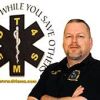Have you ever been a witness to, been a part of, or heard peers discuss witnessing or being a part of any of the following?
- Doctors paralyzing, then intubating uncooperative drunks in the ED because they were tired of listening to them yell and curse
- EMTs and firefighters wrestling a drunk or drugged individual, forcing them onto a stretcher in order to place them into an ambulance
- ED nurses wrestling with intoxicated or drunk individuals to keep them inside the room or on the bed
In any of these situations, were the health care providers providing care to a patient, or were they taking custody of a person? If those actions were captured on video and posted on the web or on local news, would those actions be viewed as “a recognized form of medical treatment”?
If you believed your actions were “reasonable” because you used those actions to place a person into medical restraints, what documentation can you provide for the training of using those techniques?
Custody or care?
By the way, one legal definition of reasonable is “in law, just, rational, appropriate, ordinary or usual in the circumstances.” What does that mean in the presence of physical contact with an uncooperative, belligerent individual?
Most emergency medical care providers I’ve spoken to state they received less than 4 hours of training in the application of medical restraints. When I ask them about the specifics of that training, the overwhelming majority admits the training was on the application of the actual soft restraint. Their training had little or nothing to do with either the physical skills or the dynamics of how to control a person and place them into the soft restraints.
Going back to the original question of custody versus care, which are we supposed to provide? Care means we operate under some form of consent. Custody is usually obtained by the use of, or the threatened use of force, usually accompanied by some form of pain compliance if force is used. In the heat of battle, the concepts can be easily confused, to the detriment of both patient and care provider.
Here are some issues surrounding this concept, and some ways to solve them.
Treat patients, not prisoners
Problem: The emergency medical community has a misconception regarding the term patient.
Solution: Educate staff on what is and what is not a patient requiring immediate medical attention. For instance: Drunk is not sick. Sick is sick. There is a difference.
Our role is to provide care to patients, not to control belligerent individuals.
Teach reasonable use of force
Problem: Too often, inappropriate levels of force are applied in the ED or pre-hospital setting, whether it be too much or too little. Many times this is due to poor or inadequate training.
Solution: Train staff in the reasonable use of force. Simply learning a few techniques that work on a compliant partner in a classroom or a class on verbal skills does not give the staff member the much-needed critical thinking skills when faced with a violent encounter.
Use a system designed for actual situations staff faces, without employing police style techniques (custody/control) or martial arts (win a fight) that have no place in the medical arena.
Encourage staff to report violence
Problem: A perceived lack of administrative support leaves staff feeling vulnerable.
Solution: Inform staff they have administrative support not only for fleeing a violent encounter, but in filing criminal complaints if they were criminally assaulted. In nearly every class I have taught across the country, at least one participant will describe an incident where a criminal assault had taken place and there was little to no support from administration.
Rest assured, you do not need to be killed or seriously injured to be changed forever due to criminal assault.
Ignoring the problems exist will not stop incidents like staff being assaulted — we keep an Assault on Staff Log, a record of news events involving staff criminally assaulted. Nor will it keep staff from acting inappropriately, like assaulting patients and getting arrested.
You can quote me: When faced with a violent encounter, staff will respond. How they respond will be based upon their training — or lack of it.


